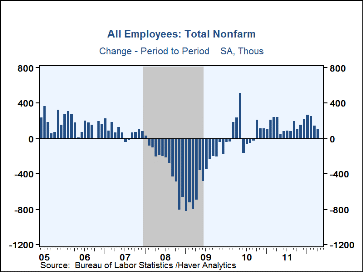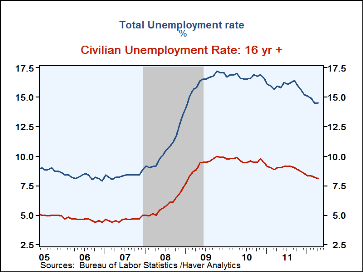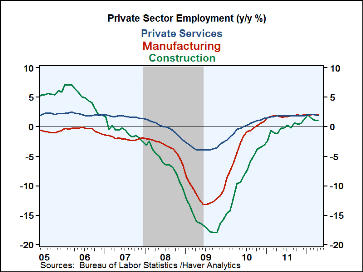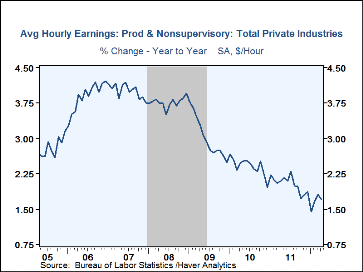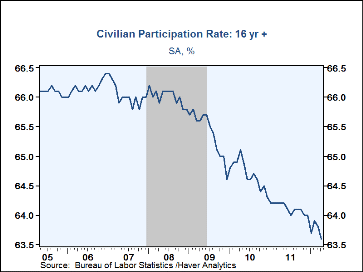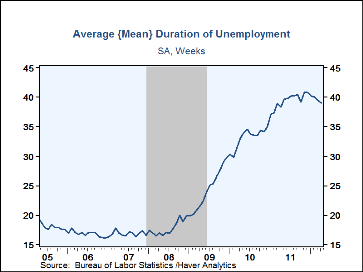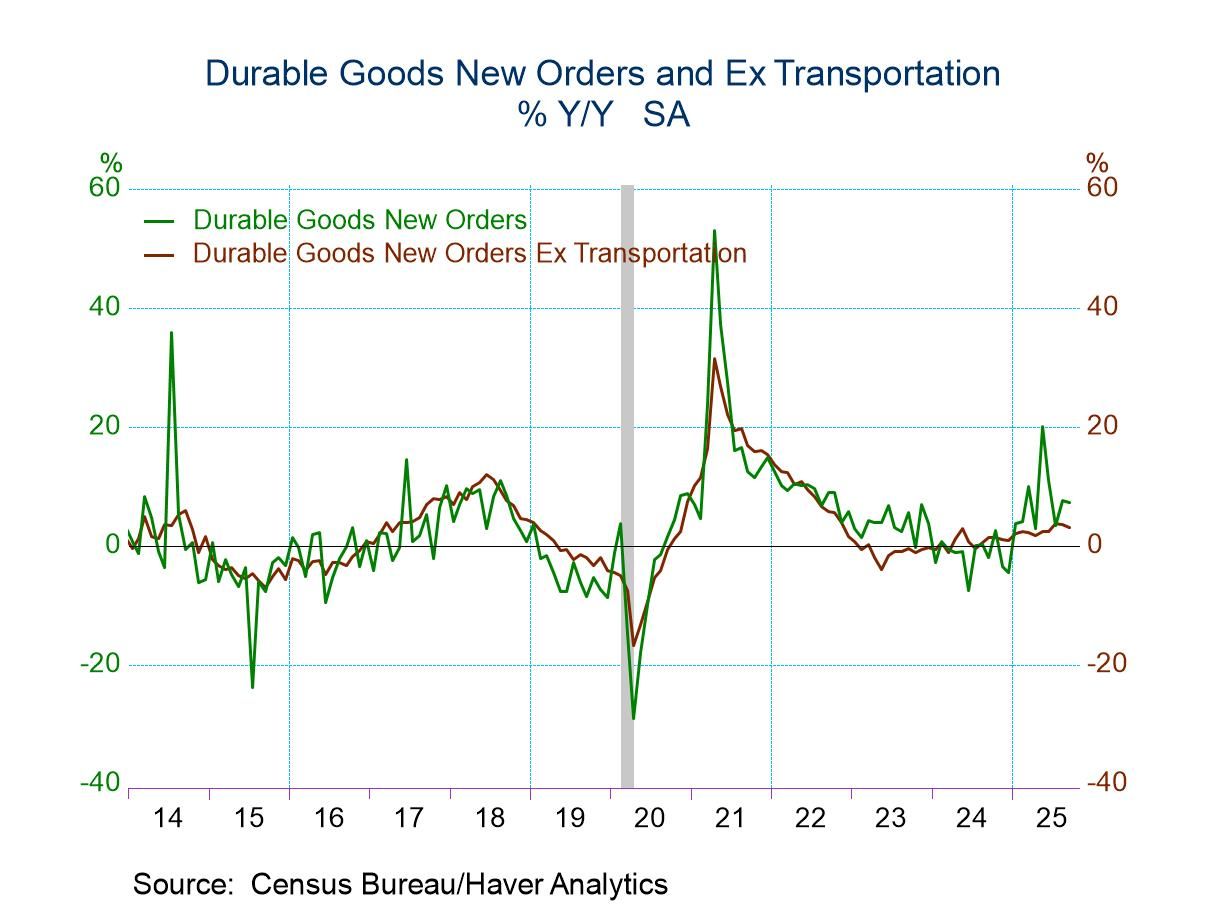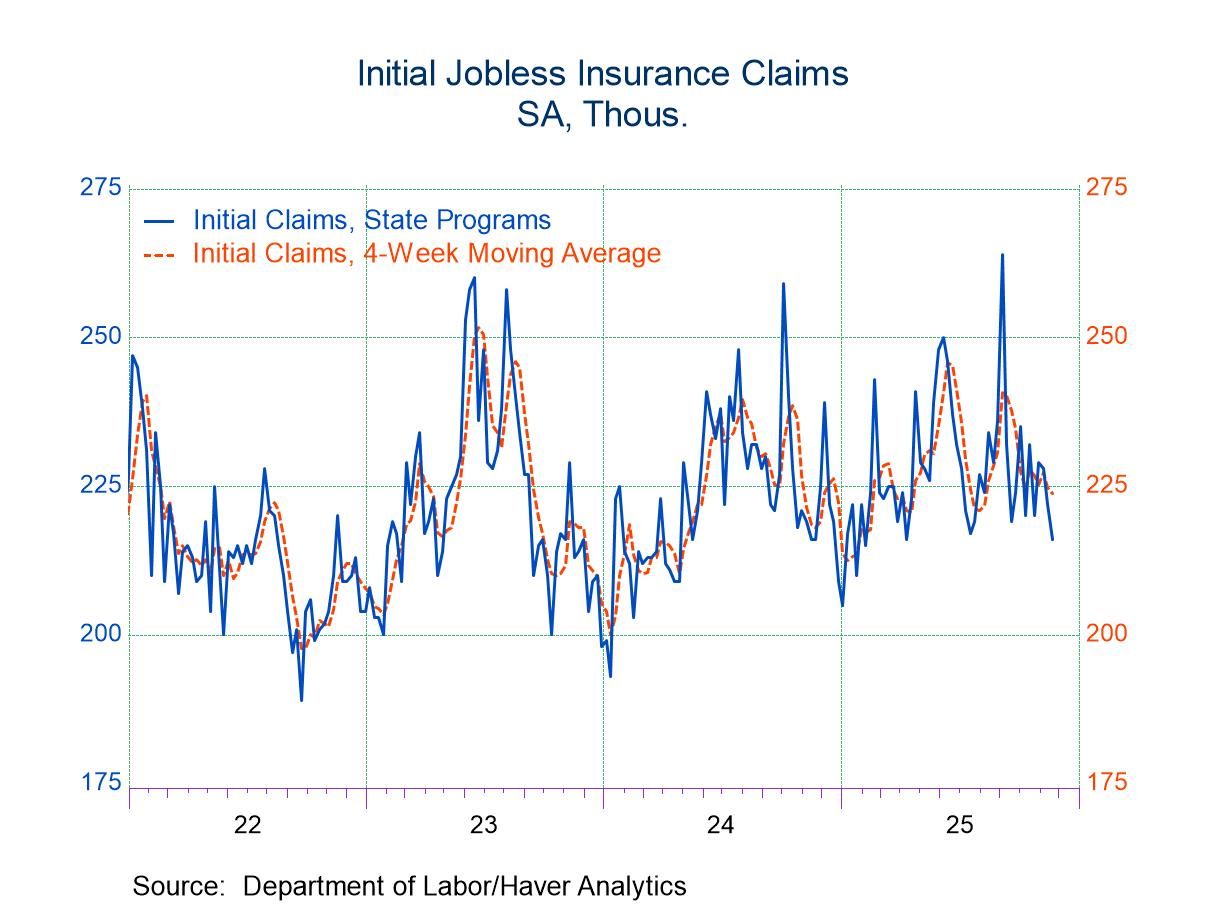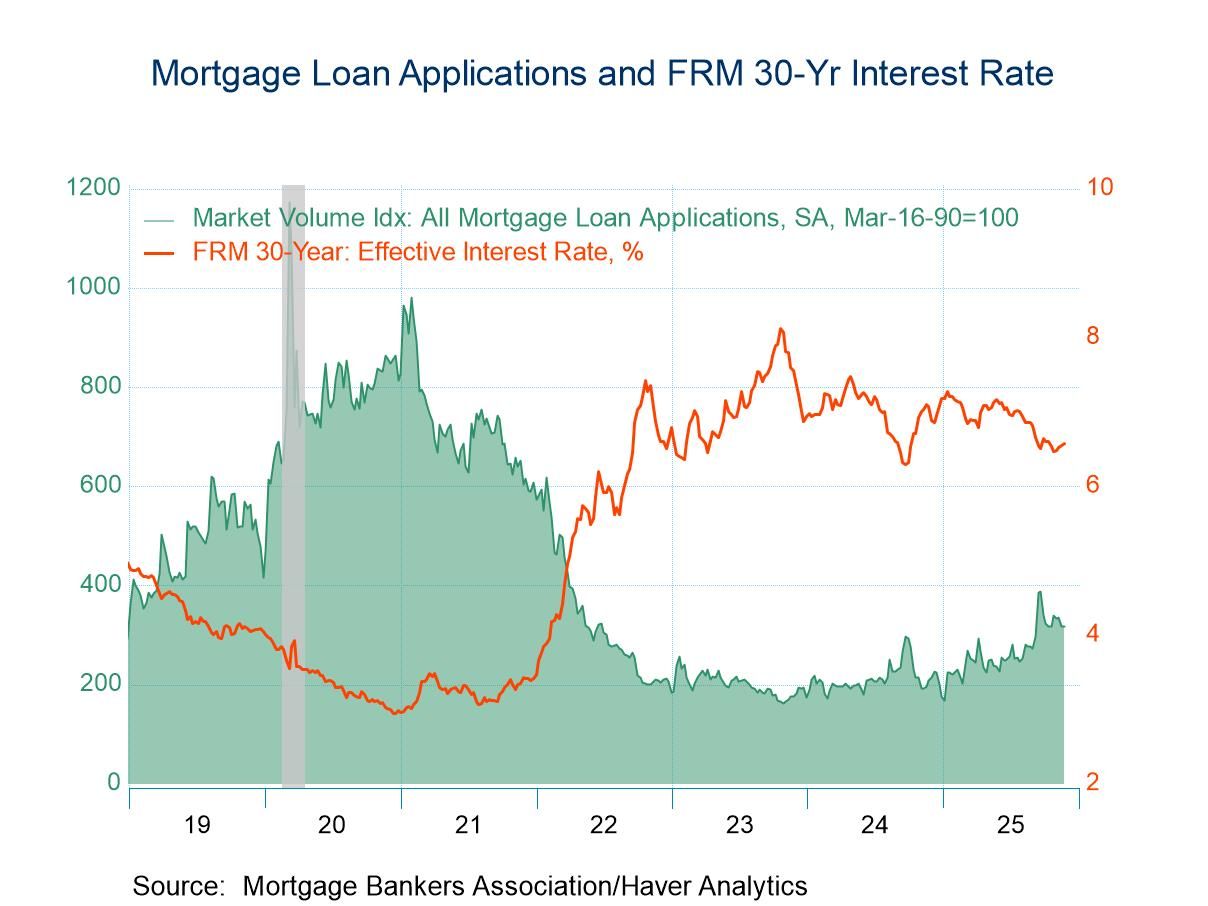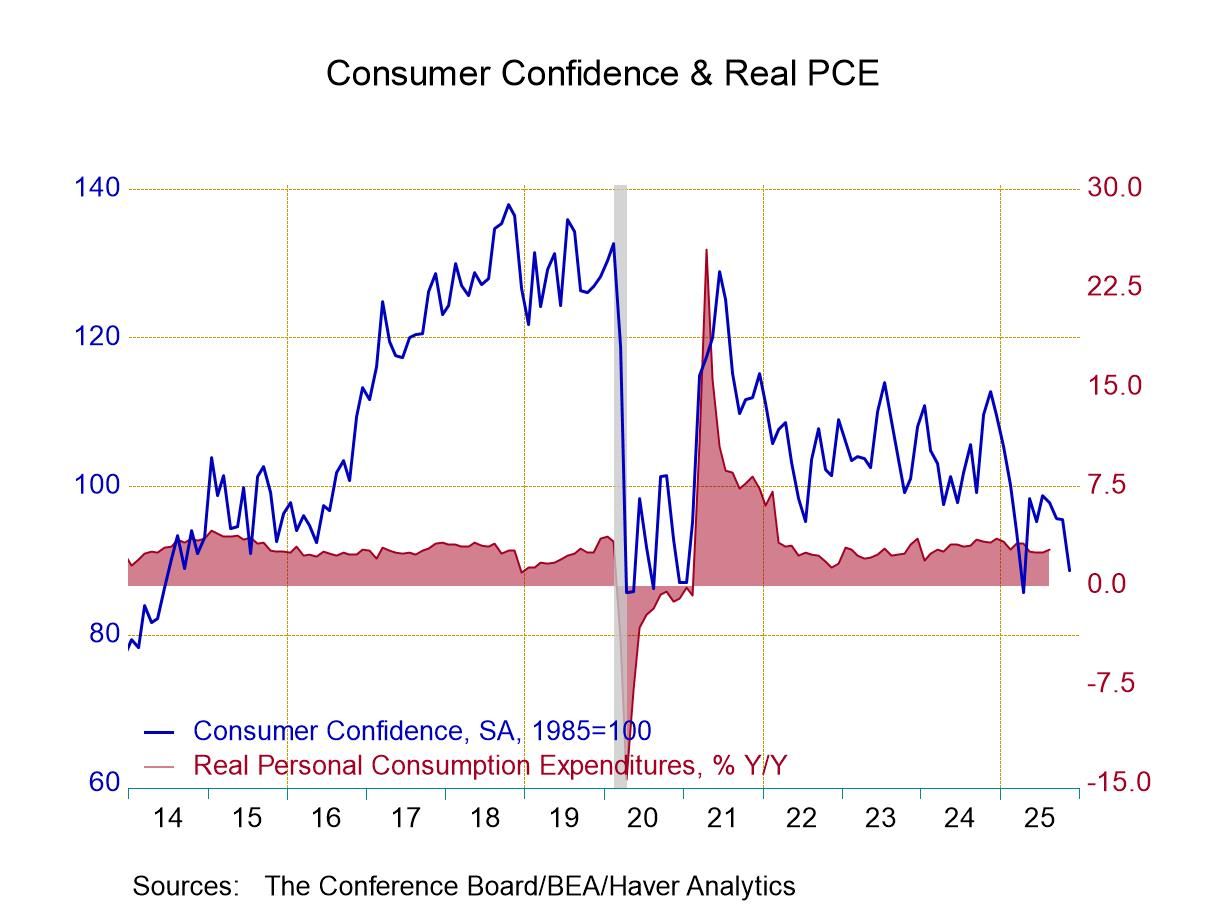 Global| May 04 2012
Global| May 04 2012U.S. Employment Growth Disappoints Again; Jobless Rate Declines
by:Tom Moeller
|in:Economy in Brief
Summary
Nonfarm payrolls grew a disappointing 115,000 (1.4% y/y) last month. The rise followed a 154,000 March increase and a 259,000 February gain which both were revised up from 120,000 and 240,000, respectively. The latest increase was [...]
Nonfarm payrolls grew a disappointing 115,000 (1.4% y/y) last month. The rise followed a 154,000 March increase and a 259,000 February gain which both were revised up from 120,000 and 240,000, respectively. The latest increase was below expectations for a 163,000 rise. From the household survey, the unemployment rate slipped to 8.1% versus expectations for an unchanged 8.2%. A broader rate of unemployment held at 14.5%.
The establishment survey numbers suggest that job market improvement may be losing forward momentum. A firm conclusion awaits further data which will be less affected by the abnormally warm winter temperatures. But for now, the figures provide evidence of job market weakness. Nonfarm payrolls rose just 115,000 last month after upward revisions of a net 53,000 during the prior two months. Weakness was broad-based amongst industries. A 16,000 (2.0% y/y) worker rise in factory employment was the least since November. Also, construction jobs fell 2,000 (+1.1% y/y) for the third down month in a row.
In the service sector, payroll gains were uniformly weak. Private service jobs increased 116,000 (1.8% y/y), the slowest since August. Information sector jobs fell 2,000 (-1.6% y/y) while financial activities employment nudged up just 1,000 (0.5% y/y). Jobs in education grew 23,000 (2.2% y/y), the weakest gain since November while leisure & hospitality employment rose 12,000 (2.4% y/y), the weakest rise since August. Finally, professional & business services employment posted a moderate 62,000 (3.6% y/y) rise which included a 21,100 (8.7% y/y) increase in temp jobs. In the government sector, jobs fell 15,000 (-1.0% y/y) reflecting a 12,000 decline (-1.0% y/y) in local employment and a 4,000 dip (-1.8% y/y) in federal jobs. State government jobs ticked up 1,000 (-0.5% y/y).
Partially offsetting the news of jobs disappointment was an unchanged average workweek in the private sector. At 34.5 hours, the length of time spent on the job was up from 33.8 at the recession low. Workers in goods producing industries worked an average 40.4 hours while those in services worked 33.3. Average hourly earnings posted a third consecutive 0.2% increase which left the y/y change at a moderate 1.7%.
From the household survey, the unemployment rate continued to fall, last month to 8.1%, its lowest since October 2009. The decline reflected a 169,000 fall (+1.6% y/y) in employment and a 342,000 drop (0.6% y/y) in the labor force. This decline in the labor force reflected a drop in the labor force participation rate to 63.6%, the lowest since 1981, as older individuals retired early and teenagers postponed entering the workforce. The total unemployment rate (U-6), including marginally attached workers and those working part time for economic reasons, held steady at 14.5%. The average duration of unemployment slipped to 39.1 weeks.
The figures referenced above are available in Haver's USECON database. Additional detail can be found in the LABOR and in the EMPL databases. The expectation figures are from Action Economics and are in the AS1REPNA database.
Worker Skills and Job Quality from the Federal Reserve Bank of San Francisco is available here.
| Employment: (M/M Chg., 000s) | Apr | Mar | Feb | Y/Y | 2011 | 2010 | 2009 |
|---|---|---|---|---|---|---|---|
| Payroll Employment | 115 | 154 | 259 | 1.4% | 1.2% | -0.7% | -4.4% |
| Previous | -- | 120 | 240 | -- | -- | -- | -- |
| Manufacturing | 16 | 41 | 30 | 2.0 | 1.8 | -2.7 | -11.6 |
| Construction | -2 | -3 | -1 | 1.1 | -0.2 | -8.2 | -16.0 |
| Private Service Producing | 116 | 128 | 218 | 1.8 | 1.8 | -0.1 | -3.5 |
| Government | -15 | -12 | 5 | -1/0 | -1.7 | -0.3 | 0.2 |
| Average Weekly Hours - Private Sector | 34.5 | 34.5 | 34.6 | 34. (Apr.'11) |
34.4 | 34.1 | 33.9 |
| Average Hourly Earnings (%) | 0.2 | 0.2 | 0.2 | 1.7 | 2.0 | 2.4 | 3.0 |
| Unemployment Rate (%) | 8.1 | 8.2 | 8.3 | 9.0 (Apr'11) |
9.0 | 9.6 | 9.3 |
Tom Moeller
AuthorMore in Author Profile »Prior to joining Haver Analytics in 2000, Mr. Moeller worked as the Economist at Chancellor Capital Management from 1985 to 1999. There, he developed comprehensive economic forecasts and interpreted economic data for equity and fixed income portfolio managers. Also at Chancellor, Mr. Moeller worked as an equity analyst and was responsible for researching and rating companies in the economically sensitive automobile and housing industries for investment in Chancellor’s equity portfolio. Prior to joining Chancellor, Mr. Moeller was an Economist at Citibank from 1979 to 1984. He also analyzed pricing behavior in the metals industry for the Council on Wage and Price Stability in Washington, D.C. In 1999, Mr. Moeller received the award for most accurate forecast from the Forecasters' Club of New York. From 1990 to 1992 he was President of the New York Association for Business Economists. Mr. Moeller earned an M.B.A. in Finance from Fordham University, where he graduated in 1987. He holds a Bachelor of Arts in Economics from George Washington University.


